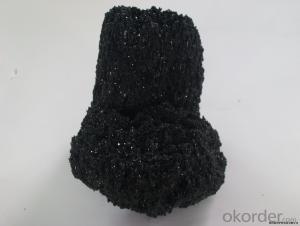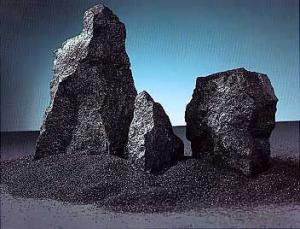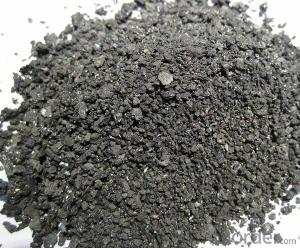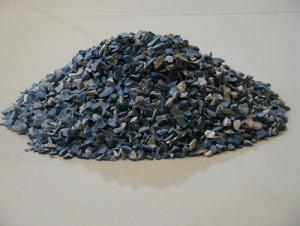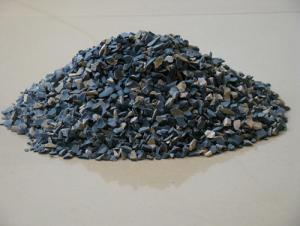96 Silicon Carbide/SiC Composition in Minerals & Metallurgy
- Loading Port:
- Tianjin
- Payment Terms:
- TT OR LC
- Min Order Qty:
- 25 m.t.
- Supply Capability:
- 3000 m.t./month
OKorder Service Pledge
OKorder Financial Service
You Might Also Like
96 Silicon Carbide/SiC Composition in Minerals & Metallurgy
1.Structure of Silicon Carbide Description
Black Silicon Carbide is produced with high temperature in a electric resistant furnace from a mixture of quartz sand and petroleum coke.
Black silicon carbide is typically used for working on cast iron ,non-ferrous metals, stone, leather, rubber, and other materials which requires sharp cutting characteristics. The mineral is also used widely as a refractory material and metallurgical additive.
2.Main Features of the Calcined Bauxite
Its hardness is between that of fused alumina and synthetic diamond and mechancial intensity of it is also greater than that of fused alumina. It is brittle and very sharp and has a certain degree of electrical and heat conductivity.
3.Main usage of the Calcined Bauxite
1.Grinding non-ferrous materials, rock, stone, leather, rubber, finishing tough and hard materials
2.Bonded abrasive tools, lapping and polishing
3.Widely used as a metallurgical additive and refractory material
4.Refractory
4. Calcined Bauxite Images
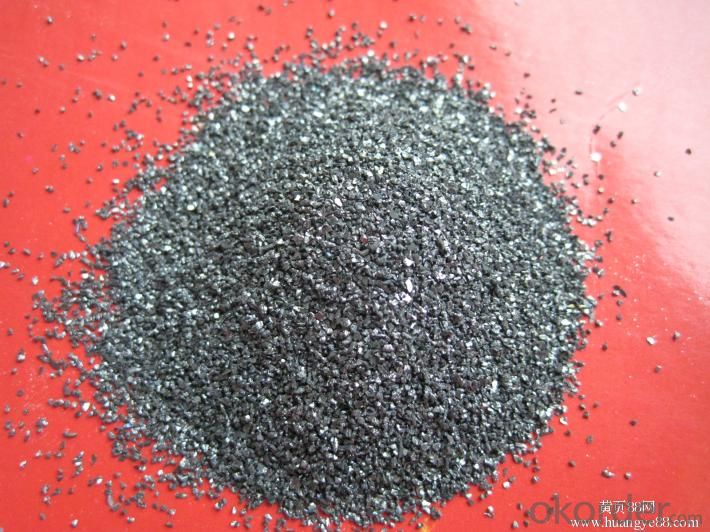
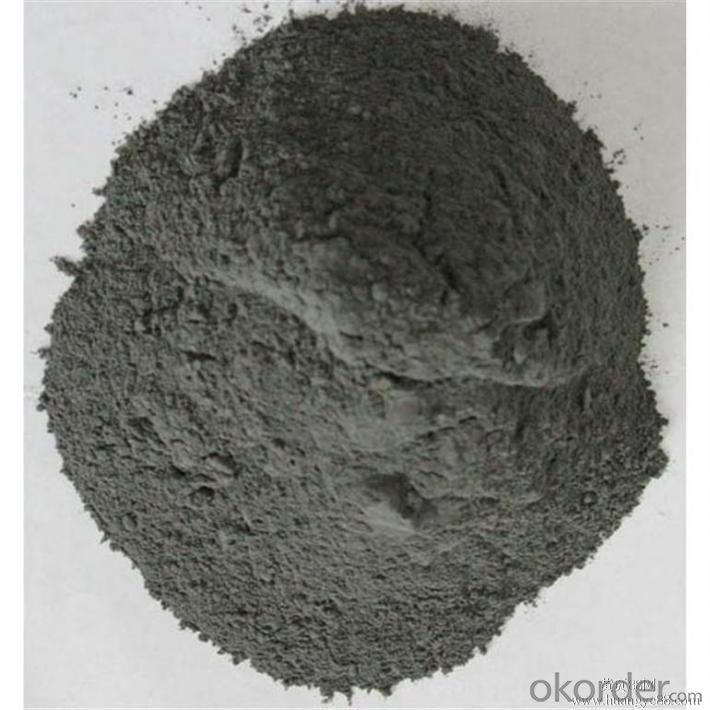
5. Calcined Bauxite Specification
Items | Unit | Index | Typical | |
Chemical composition | SiC | % | 99min | 99.4 |
F C | % | 0.20max | 0.11 | |
Fe2O3 | % | 0.2max | 0.09 | |
SiO2 | % | 0.3max | 0.18 | |
MI | % | 0.03max | ||
| GritF grade and P grade | FEPA | 16, 24, 46, 100,180,220 | ||
6.FAQ of Calcined Bauxite
1). Q: Are you a factory or trading company?
A: We are a factory.
2). Q: Where is your factory located? How can I visit there?
A: Our factory is located in Ningxia, China. You are warmly welcomed to visit us!
3). Q: How can I get some samples?
A: Please contact me for samples
- Q:Who can tell me what is neutral refractory?
- Refractories mainly refer to aluminum oxide, chromium oxide and carbon as the main component of refractory materials, such as corundum brick, high alumina brick, and carbon brick. Its characteristic goes to the resistance to both acidic and basic slag. Basic refractories mainly refer to the refractory materials whose mian components are magnesium oxide and calcium oxide, including magnesia bricks, magnesia-alumina bricks, magnesia chrome bricks, dolomite bricks, etc. Basic refractory is good at resisting basic slag erosion.
- Q:What are the uses of refractory materials of glass furnace?
- crown--high-purity silica bricks; wall--melting end 41# fused zirconia corundum bricks with no shrinkages(41% of zirconium, similarly hereinafter), cooling end 33# fused zirconia corundum bricks with no shrinkages; bottom--33# fused zirconia corundum bricks(with shrinkages); breastwork--33# fused zirconia corundum bricks(with shrinkages); port--33# fused zirconia corundum bricks(with shrinkages); regenerator chamber--the upper part is for magnesite-chrome bricks, the bottom part is for high-duty fireclay bricks; checker--the upper part is for high purity magnesia bricks, and the bottom part is for magnesite-chrome bricks; flue--clay bricks. This is the best configuration. If the funds are limited, the configuration can be lowered, for example, the wall will be changed to 38 #......
- Q:What is high alumina refractory?
- It refers to inorganic non-metallic material with refractoriness of higher than 1580℃. Refractoriness refers to the celsius temperature that the cone-shaped refractory sample without load can resist, and under which the sample won't soften and melt down. Refractory material appears together with high temperature technology, and roughly dates from the Middle Bronze age. In the Eastern Han Dynasty (AD25~AD220) of China, fireclay refractories has been used as furnace refractories and saggers for making porcelains. In the early 20th century, refractory material develops toward the direction of high purity, high dense and ultra high temperature products, and meanwhile unshaped refractory and refractory fiber with no need of firing at all and with low energy consumption appear.
- Q:Manganese steel belongs to refractories
- NO!
- Q:What are grades of refractory materials?
- Refractories have lots of varieties which all have different purposes. It is necessary to classify refractories scientifically in order to scientifically study, choose and manage them. Classification methods of refractories include chemical properties classification, chemical composition of mineral classification, manufacturing technique classification, morphology of the material classification. 1 divided according to the level of refractoriness: ordinary refractory materials: 1580 ℃ ~ 1770 ℃, advanced refractories: 1770 ℃ ~ 2000 ℃ and super refractories: above 2000 ℃ 2, divided in accordance with shapes and sizes : Standard ones: 230mm × 113mm × 65mm, no more than four ruler.
- Q:Preparation of refractory clay
- Is it to make refractories? Add some andalusite to the refractory mortar will improve the effect.
- Q:What is the magnesium carbon refractory?
- The composition of refractory brick raw material There are many types of refractory brick raw materials, mainly divided into six categories: Soil, stone, sand, mineral, power and others. One of the original material, soil: Aluminum, kaolin, clay, diatomaceous earth The second raw material, Stone: fluorite, kyanite, andalusite, forsterite, vermiculite, mullite, pyrophyllite, chlorite, dolomite, sillimanite, magnesia-alumina spinel, silica The third kind of raw material, sand: Pottery, zircon sand, quartz sand, magnesite The fourth kind of raw material, ore: Chrome ore The fifth kind of raw material, powder: Aluminum powder, silica powder, silicon powder The sixth kind of raw material of refractory brick, others: Asphalt, graphite, phenolic resins, perlite, cenosphere, sialon, corundum, silicon sulfate, silicon carbide, sodium silicate, silica solution, boron carbide, calcium aluminate cement, nitride material, shale ceramisite, alumina, alumina sol and zirconia, etc.
- Q:How to divide the fire resistant level of EVB?
- 1. The thermal insulation material of level A combustion performance: Inorganic fiber spray coating, glass wool, foam glass, foamed ceramics, rock wool, foam cement and hole-closed perlite, etc. 2. combustion performance is level B1 insulation materials: Extruded polystyrene board (XPS) after special treatment / Special treatment of polyurethane (PU), phenolic aldehyde and gelatine powder polyphenyl granule 3, combustion performance is level B2 insulation material: Molded polystyrene board (EPS), extruded polystyrene board (XPS), polyurethane (PU), polyethylene (PE), etc. I hope I can help you!
- Q:What is the fire endurance of fireproof glass cotton?
- Good thermal insulation and thermal insulation. thermal insulation and thermal insulation depends on the heat conductivity coefficient of glass?silk λ=0.043W/m2K. good fireproof?performance, it's fire-resistant capacity is more than 1000 ℃.
- Q:What kind of material is refractory fiber?
- Refractory fiber, also known as ceramic fiber, is fibrous thermal insulation refractory. It has the characteristics of ordinary fibers, such as softness, flexibility, having a certain tensile strength. And it can be further processed into a variety of products such as paper, wire, rope, tape, blankets and felts.
1. Manufacturer Overview |
|
|---|---|
| Location | |
| Year Established | |
| Annual Output Value | |
| Main Markets | |
| Company Certifications | |
2. Manufacturer Certificates |
|
|---|---|
| a) Certification Name | |
| Range | |
| Reference | |
| Validity Period | |
3. Manufacturer Capability |
|
|---|---|
| a)Trade Capacity | |
| Nearest Port | |
| Export Percentage | |
| No.of Employees in Trade Department | |
| Language Spoken: | |
| b)Factory Information | |
| Factory Size: | |
| No. of Production Lines | |
| Contract Manufacturing | |
| Product Price Range | |
Send your message to us
96 Silicon Carbide/SiC Composition in Minerals & Metallurgy
- Loading Port:
- Tianjin
- Payment Terms:
- TT OR LC
- Min Order Qty:
- 25 m.t.
- Supply Capability:
- 3000 m.t./month
OKorder Service Pledge
OKorder Financial Service
Similar products
New products
Hot products
Related keywords
